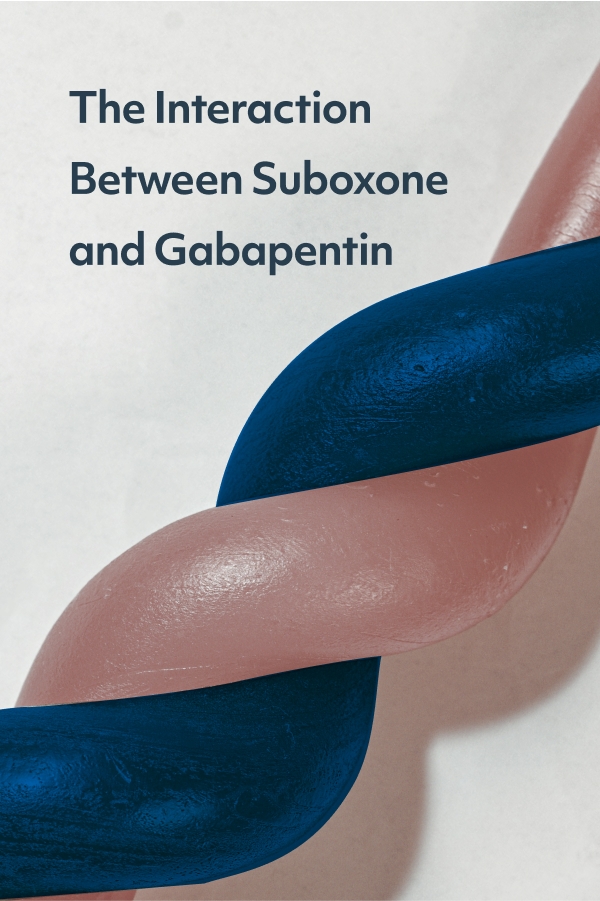The interaction between Suboxone and gabapentin shows why it’s important to take prescription medications as directed.
Suboxone basics
Suboxone (a brand name for buprenorphine/naloxone) can play a very important role in many people’s recovery journey, helping them manage withdrawal symptoms as well as cravings for opioids. While buprenorphine can be a life-saving drug for many people, it can also have adverse interactions with various other prescription drugs. This is why it is vital to only use Suboxone under the care and direct supervision of a licensed medical professional. They will help you manage your dosage and warn you of possible contraindications with other medications.
The following medications (among others) have been shown to have an adverse effect when combined with Suboxone:
- Benzodiazepines
- Sedating antihistamines
- Opioids
- Some anticonvulsants
- Some antidepressants
- Some antipsychotics
Communicate with your clinician regularly regarding any other medications you may be taking while also taking a buprenorphine medication like Suboxone. This is especially vital if they are depressants (i.e., if they have sedating/calming effects) like buprenorphine.
Gabapentin basics
One medication that is widely prescribed in the United States that can have an adverse reaction with Suboxone is gabapentin. It is sold under the brand names Neurontin, Gralise, and Horizant, as well as in generic forms. Gabapentin is classified as an anticonvulsant and was originally manufactured to assist with seizures in people experiencing epilepsy. Since the medication’s original conception, doctors have found “off-label” uses that treat a variety of conditions that are not associated with seizures. Off-label prescribing occurs when a medication is prescribed to treat a condition it has not been FDA-approved to treat, and it happens with many prescription medications.
Some of the conditions gabapentin is often prescribed off-label for include:
- Hot flashes
- Restless leg syndrome
- Neuropathic pain
- Bipolar disorder
- Insomnia
- Anxiety disorders
The neuropathic pain relief aspect of gabapentin may seem very appealing to people who have misused drugs in part due to their chronic pain.
How is gabapentin used in addiction medicine?
One of the off-label uses of gabapentin is to treat withdrawal symptoms from opioids and alcohol. There is both research and anecdotal evidence that supports this use, and many clinicians prescribe it for that purpose. But again, this is an off-label usage and not approved by the FDA. Gabapentin’s overall calming and relaxing effect means that it can also be helpful when used as a comfort medication.
If gabapentin is such a useful drug, why are there such strong concerns about prescribing Suboxone together with gabapentin?
Suboxone and gabapentin, two central nervous system depressants
Buprenorphine (like other opioids) is a central nervous system depressant. This means it slows down brain activity, which then causes the muscles to relax and creates an overall calming feeling in a person. Central nervous system depressants cause side effects such as lethargy, slower breathing, and decreased heart rate.
Gabapentin is also a central nervous system depressant and reacts in the body in similar ways as buprenorphine. Gabapentin and Suboxone potentiate one another. In layman’s terms, this means that when taken together, they increase and amplify the overall effect of one another. This can be dangerous. Combining two central nervous system depressants significantly increases the chance of those adverse side effects I mentioned: lethargy, depressed breathing, and a decreased heart rate. Because the two medications amplify one another, the combination can cause a person’s breathing or heart rate to slow down to the point where they risk dying.
The bottom line
Gabapentin is a popular medication with many doctors who treat alcohol and opioid use disorder, but it can be dangerous when combined with Suboxone or any other central nervous system depressant. Only take both medications if you are directed to by a clinician, and only under direct medical supervision. Do not take them both without the express, clear guidance of a licensed clinician.










